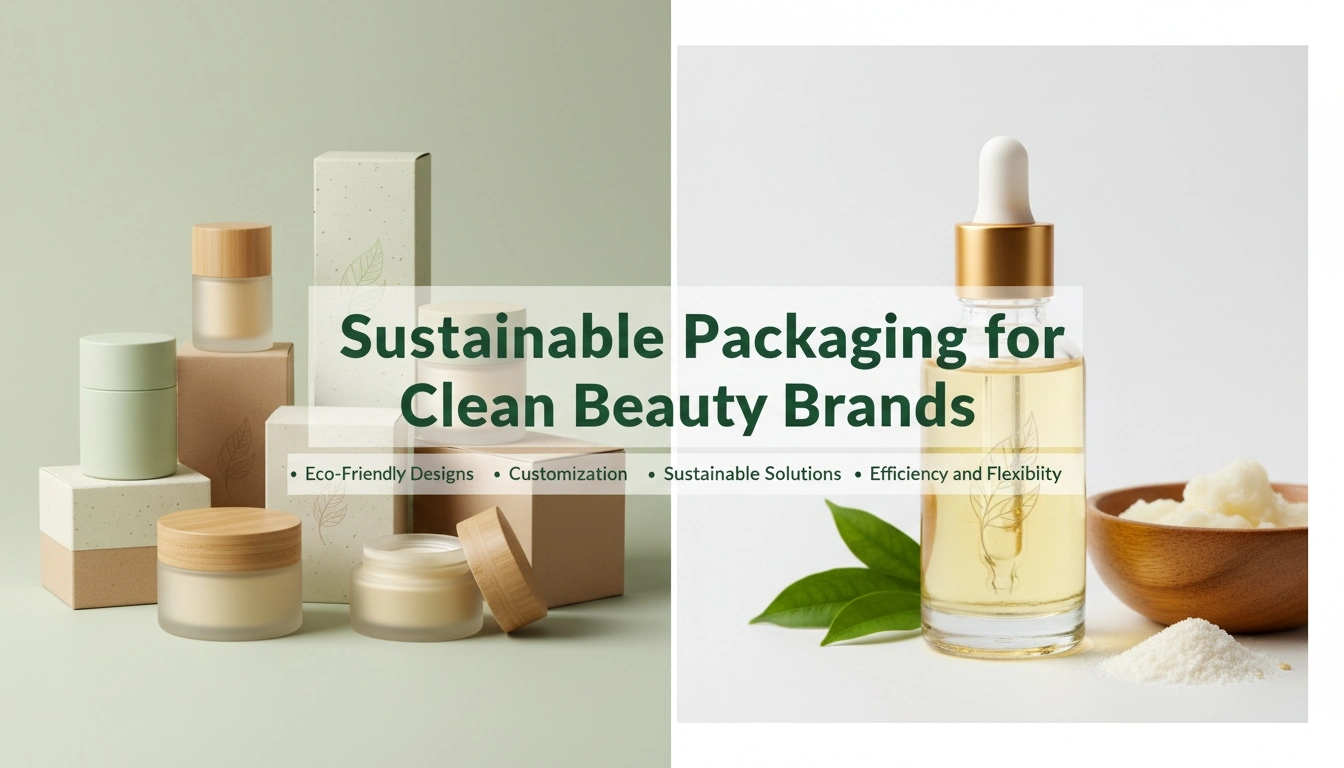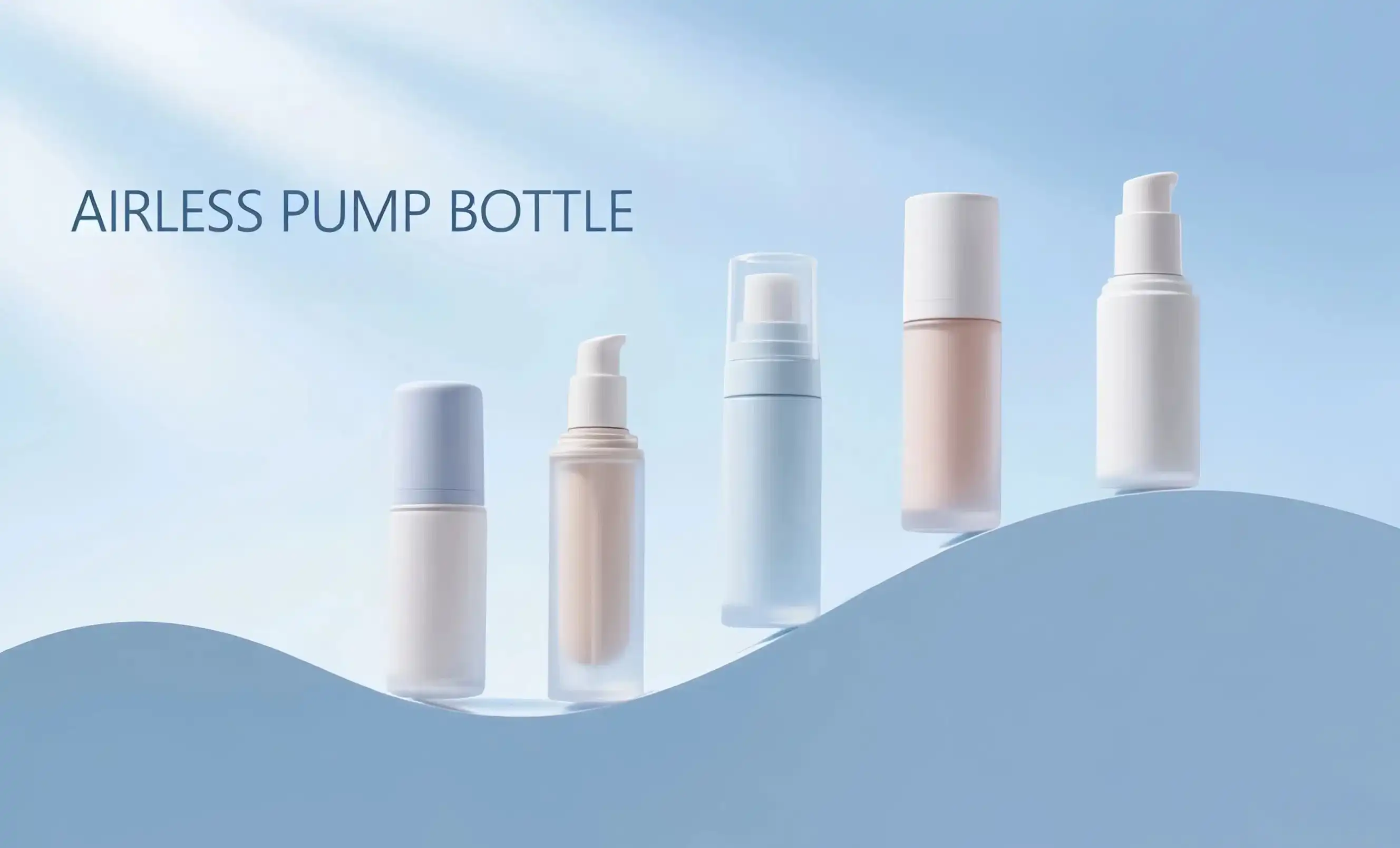Airless bottles consist of a sealed chamber that houses the product, a piston or diaphragm that moves upward as the content is dispensed, and a non-aerosol pump mechanism. This unique design ensures that the product remains in an oxygen-free environment, preventing oxidation and contamination. As a result, sensitive ingredients stay fresh and effective for longer periods, making airless packaging ideal for high-end skincare products, serums, and other formulations that are vulnerable to air exposure.

How does an airless bottle pump work?
The functionality of an airless pump bottle is based on a simple yet ingenious mechanism that sets it apart from traditional packaging options. When you press the pump, it creates a vacuum inside the bottle, which forces the product upward through a small opening. This process occurs without allowing air to enter the container, maintaining the product's purity and efficacy.
Key components of an airless pump system:
- Outer container: Typically made of plastic or glass, it houses the inner workings of the airless system.
- Inner pouch or piston: This flexible component moves upward as the product is dispensed, ensuring no air enters the chamber.
- Non-aerosol pump: Delivers a precise amount of product with each press, without using propellants.
- One-way valve: Prevents product from flowing back into the container, maintaining hygiene.
As you continue to use the product, the inner pouch or piston gradually rises, pushing the remaining contents toward the pump. This design allows for nearly complete product evacuation, minimizing waste and ensuring you get the most out of your purchase.
Advantages of airless pump technology in cosmetics
The adoption of airless bottle technology in the cosmetics industry has brought numerous benefits to both manufacturers and consumers. Let's examine the key advantages that make airless pumps a preferred choice for many skincare and beauty brands:
Extended product shelf life
One of the primary benefits of airless pump bottles is their ability to significantly extend the shelf life of cosmetic products. By preventing air exposure, these containers minimize oxidation and bacterial contamination, which are major factors in product degradation. This preservation capability is particularly valuable for formulas containing sensitive ingredients like vitamins, antioxidants, and natural extracts.
Improved formula stability
Airless packaging helps maintain the stability of complex cosmetic formulations. Without constant exposure to air, active ingredients remain potent and effective throughout the product's lifespan. This stability ensures that consumers experience consistent results from the first use to the last drop.
Enhanced hygiene
The closed system of an airless pump bottle reduces the risk of contamination from external sources. Unlike jars or open-top bottles, airless packaging minimizes contact between the product and potential contaminants like bacteria, dust, or fingers. This feature is especially important for preservative-free or natural formulations.
Precise dosage control
Airless pumps offer excellent control over product dispensing. Each pump action delivers a consistent amount of product, helping users apply the right quantity and avoid overuse. This precision not only ensures optimal product performance but also contributes to cost-effectiveness for consumers.
Reduced product waste
The design of airless bottles allows for maximum product usage. As the contents are depleted, the inner mechanism continues to push the remaining product toward the pump, ensuring that nearly every drop can be dispensed. This efficiency is particularly appreciated in high-end skincare products where every bit counts.
Versatility in formulation
Airless technology accommodates a wide range of product viscosities, from light serums to thick creams. This versatility allows cosmetic companies to package various formulations in airless containers without compromising on functionality or user experience.
Airless vs. traditional pumps: Key differences
While both airless and traditional pump bottles serve the purpose of dispensing cosmetic products, they differ significantly in design, functionality, and benefits. Understanding these differences can help brands and consumers make informed choices about packaging options.
Preservation of product integrity
Airless bottles excel in preserving product integrity by creating an oxygen-free environment. This feature is particularly crucial for formulations containing sensitive ingredients that are prone to oxidation. Traditional pumps, on the other hand, allow air to enter the bottle as the product is used, potentially compromising the formula's stability and efficacy over time.
Dispensing mechanism
Airless pumps use a vacuum or piston system to push the product upward, ensuring consistent dispensing without air exposure. Traditional pumps rely on a dip tube that draws the product from the bottom of the bottle, which can lead to inconsistent dispensing as the product level decreases.
Product evacuation
One of the most significant advantages of airless packaging is its ability to dispense nearly 100% of the product. The upward-moving mechanism ensures that almost every drop is accessible. Traditional pumps often leave a considerable amount of product at the bottom of the bottle, leading to waste.
Compatibility with formulations
Airless systems are highly versatile and can accommodate a wide range of product viscosities. They are particularly well-suited for oxygen-sensitive formulations, preservative-free products, and natural cosmetics. Traditional pumps may struggle with very thick or very thin formulations and are less ideal for sensitive ingredients.
Cost and production considerations
Initially, airless packaging may have a higher production cost compared to traditional pump bottles. However, the benefits in terms of product preservation, reduced waste, and enhanced user experience often justify the investment, especially for premium skincare brands.
Environmental impact
Both airless and traditional pump bottles can be designed with sustainability in mind. However, airless bottles often have an edge in reducing product waste, which indirectly contributes to environmental conservation. Additionally, many airless bottles are now being produced using recyclable materials, aligning with the growing demand for eco-friendly packaging solutions.
In conclusion, airless pump bottles represent a significant advancement in cosmetic packaging technology. Their ability to preserve product integrity, extend shelf life, and minimize waste makes them an attractive option for both manufacturers and consumers. As the beauty industry continues to innovate, airless packaging is likely to play an increasingly important role in delivering high-quality, effective products to discerning customers.
For brands looking to elevate their packaging game and ensure optimal product performance, airless bottles offer a compelling solution. Whether you're a skincare brand focusing on potent active ingredients, a makeup company seeking precision in application, or a beauty store developing your own line, airless technology can provide the edge you need in today's competitive market.
Are you ready to explore the benefits of airless packaging for your cosmetic products? At Topfeelpack, we specialize in advanced airless bottles designed to meet the diverse needs of the beauty industry. Our commitment to sustainability, fast customization, and competitive pricing makes us the ideal partner for brands seeking innovative packaging solutions. From high-end skincare to trendy makeup lines, our airless bottles can be tailored to suit your specific requirements.
Don't let your products lose their potency or appeal due to suboptimal packaging. Embrace the future of cosmetic containers with Topfeelpack's cutting-edge airless technology. For more information on how our airless bottles can transform your product line, enhance user experience, and boost your brand image, contact us today at pack@topfeelgroup.com. Let's work together to create packaging that not only protects your formulations but also elevates your brand in the eyes of consumers.
References
- Johnson, A. (2022). The Evolution of Cosmetic Packaging: From Traditional to Airless. Journal of Packaging Technology, 18(3), 245-260.
- Smith, B., & Brown, C. (2021). Airless Pump Technology: Revolutionizing Product Preservation in the Beauty Industry. Cosmetic Science Review, 42(2), 112-128.
- Lee, S., et al. (2023). Comparative Analysis of Product Stability in Airless vs. Traditional Pump Bottles. International Journal of Cosmetic Science, 45(1), 78-95.
- Garcia, M. (2022). Sustainability in Cosmetic Packaging: The Role of Airless Systems. Green Packaging Innovations, 7(4), 301-315.
- Thompson, R. (2021). Consumer Perceptions and Preferences for Airless Pump Bottles in Skincare Products. Journal of Consumer Behavior in Cosmetics, 13(2), 189-204.
- Wong, L., & Chen, Y. (2023). Advancements in Airless Pump Technology for Viscous Cosmetic Formulations. Polymer Engineering & Science, 63(5), 712-728.
This article is reposted from “What Is an Airless Pump Bottle?”.
Original link: https://www.ecoairlessbottles.com/news/what-is-an-airless-pump-bottle/
If there is any infringement, please contact us for removal.

 - 副本_1745399213966.webp)

_1747827716538.webp)

